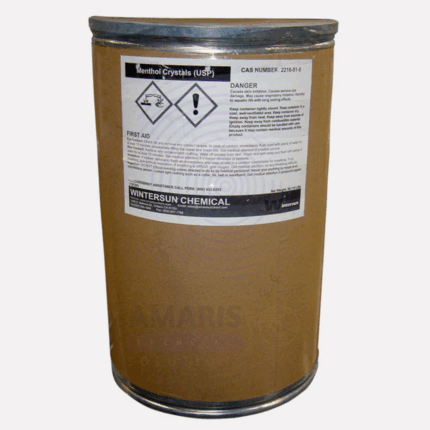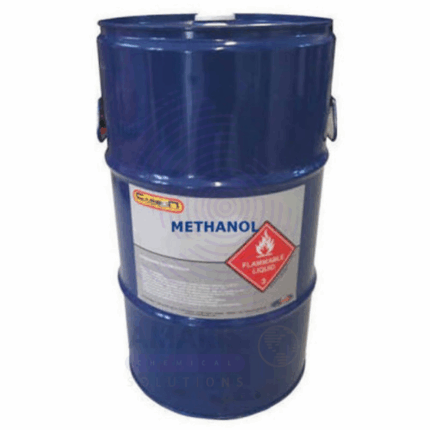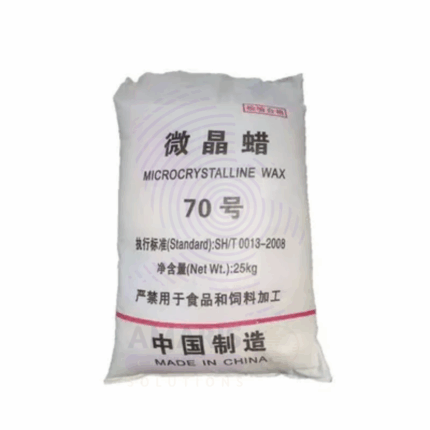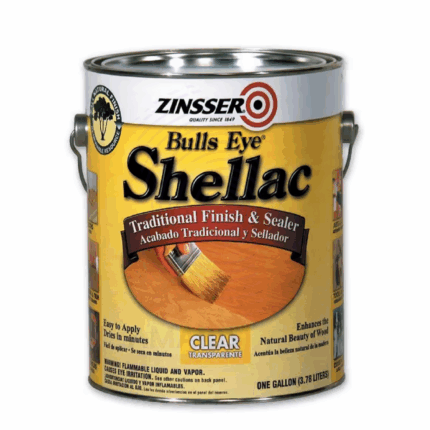Ashwagandha Powder
Ashwagandha Powder is derived from the dried roots of Withania somnifera, a renowned herb in Ayurvedic and traditional medicine systems. Known as Indian ginseng or winter cherry, Ashwagandha is valued for its adaptogenic properties, helping the body combat stress, enhance vitality, and support overall wellness. The powder is finely ground root material, rich in bioactive compounds such as withanolides, alkaloids, and steroidal lactones. It is widely used as a dietary supplement, in herbal formulations, cosmetics, and traditional medicine.
-
Table of Contents Toggle
Uses
Primary Uses
- Nutritional & Dietary Supplements
- Used as an adaptogen to reduce stress and anxiety by modulating cortisol levels.
- Supports immune system health and boosts energy and stamina.
- Enhances cognitive function, memory, and concentration.
- Promotes better sleep quality and relaxation.
- Traditional & Herbal Medicine
- Employed in Ayurveda and herbal systems to treat fatigue, arthritis, inflammation, and nervous disorders.
- Used as a tonic for general health improvement and longevity.
- Cosmetics & Personal Care
- Incorporated in skincare products for its anti-inflammatory and anti-aging properties.
- Used in hair care formulations to strengthen hair and reduce dandruff.
- Sports & Fitness
- Taken by athletes and fitness enthusiasts to improve muscle strength, endurance, and recovery.
Secondary Uses
- Anti-inflammatory & Pain Relief
- Applied in herbal remedies to alleviate joint pain and muscle soreness.
- Hormonal Balance
- Used in formulations aimed at supporting thyroid and reproductive health.
- Mood and Mental Health
- Explored as a natural support for mild depression and mood stabilization.
- Basic Identification Attributes
- Chemical Name (IUPAC): Not applicable (herbal powder)
- Common/Trade Names: Ashwagandha Powder, Indian Ginseng, Withania somnifera Powder
- CAS Number: Not applicable (natural botanical)
- HS Code: 1211.90 (varies by country)
- Molecular Formula: Complex mixture of phytochemicals including withanolides (varies)
- Synonyms:
- Winter Cherry
- Withania Root Powder
- Physical & Chemical Properties
- Physical State: Fine to coarse brownish powder
- Color & Odor: Light brown, characteristic herbal odor
- Melting Point: Not applicable
- Boiling Point: Not applicable
- Density: Approximately 0.4 - 0.6 g/cm³ (bulk density)
- Solubility: Partially soluble in water; better extraction in alcohol or water-alcohol mixtures
- pH Level: Slightly acidic to neutral (varies by source)
- Safety & Hazard Attributes
- Hazard Class (GHS): Generally recognized as safe (GRAS)
- NFPA Ratings: Health 0, Flammability 1, Reactivity 0
- Exposure Limits: No specific limits; avoid inhalation of dust
- Reactivity: Stable under normal conditions
- Storage & Handling Attributes
- Storage Conditions: Store in cool, dry, and dark place in airtight containers
- Container Type: Food-grade plastic or glass containers recommended
- Shelf Life: Typically 1-2 years if stored properly
- Special Handling: Avoid moisture and prolonged exposure to heat or light to preserve bioactive components
- Regulatory & Compliance Attributes
- FDA (USA): Generally Recognized As Safe (GRAS) as a dietary supplement ingredient
- EFSA (EU): Recognized as a novel food ingredient in certain preparations
- Hazard Symbols (GHS): None
- Transportation Restrictions: None specific
- Waste Disposal: Dispose as organic waste
- Environmental & Health Impact
- Ecotoxicity: Low; biodegradable
- Persistence: Decomposes naturally
- Carcinogenicity/Mutagenicity: No evidence of carcinogenic or mutagenic effects
Biodegradability: Readily biodegradable
-
Safety Handling Precautions
- Use gloves and dust mask when handling powder to avoid dust inhalation.
- Work in a well-ventilated area to prevent respiratory irritation.
- Avoid contact with eyes; wash hands after handling.
- Store sealed to prevent moisture uptake and contamination.
First Aid Measures
- Inhalation: Move to fresh air; if coughing or breathing difficulty persists, seek medical attention.
- Skin Contact: Wash with soap and water; if irritation develops, consult a physician.
- Eye Contact: Rinse thoroughly with water; seek medical advice if irritation persists.
- Ingestion: Generally safe in recommended doses; if large amounts ingested and adverse effects occur, seek medical help.
Firefighting Measures
- Fire Hazards: Slightly flammable as dry powder; avoid accumulation of dust.
- Extinguishing Media: Use water spray, foam, or dry chemical extinguishers.
Special Precautions: Prevent dust cloud formation; wear protective equipment during fire fighting.
Related products
Menthol crystals
Methanol
Methyl Cellulose 400mpc
Miconazole Nitrate BP
Miconazole Nitrate BP is a high-purity, pharmaceutical-grade antifungal agent conforming to British Pharmacopoeia (BP) specifications. It is widely used in the formulation of topical and oral pharmaceutical products for the treatment of fungal infections caused by dermatophytes and yeasts, including Candida species. Miconazole Nitrate functions by inhibiting the biosynthesis of ergosterol, a vital component of fungal cell membranes, leading to cell death.
This white to off-white crystalline powder is highly effective and exhibits broad-spectrum antifungal and some antibacterial activity. It is commonly utilized in creams, ointments, powders, and gel formulations.


 Preservatives(food)
Preservatives(food) Flavor Enhancers
Flavor Enhancers Acidulants
Acidulants Sweeteners
Sweeteners Antioxidants
Antioxidants Colorants(food)
Colorants(food) Nutraceutical Ingredients (food)
Nutraceutical Ingredients (food) Nutrient Supplements
Nutrient Supplements Emulsifiers
Emulsifiers
 Collectors
Collectors Dust Suppressants
Dust Suppressants Explosives and Blasting Agents
Explosives and Blasting Agents Flocculants and Coagulants
Flocculants and Coagulants Frothers
Frothers Leaching Agents
Leaching Agents pH Modifiers
pH Modifiers Precious Metal Extraction Agents
Precious Metal Extraction Agents
 Antioxidants(plastic)
Antioxidants(plastic) Colorants (Pigments, Dyes)
Colorants (Pigments, Dyes) Fillers and Reinforcements
Fillers and Reinforcements Flame Retardants
Flame Retardants Monomers
Monomers Plasticizers
Plasticizers Polymerization Initiators
Polymerization Initiators Stabilizers (UV, Heat)
Stabilizers (UV, Heat)
 Antifoaming Agents
Antifoaming Agents Chelating Agents
Chelating Agents Coagulants and Flocculants
Coagulants and Flocculants Corrosion Inhibitors
Corrosion Inhibitors Disinfectants and Biocides
Disinfectants and Biocides Oxidizing Agents
Oxidizing Agents pH Adjusters
pH Adjusters Scale Inhibitors( water)
Scale Inhibitors( water)
 Antioxidants(cosmetic)
Antioxidants(cosmetic) Emollients
Emollients Fragrances and Essential Oils
Fragrances and Essential Oils Humectants
Humectants Preservatives
Preservatives Surfactants(cosmetic)
Surfactants(cosmetic) Thickeners
Thickeners UV Filters
UV Filters
 Fertilizers
Fertilizers Soil Conditioners
Soil Conditioners Plant Growth Regulators
Plant Growth Regulators Animal Feed Additives
Animal Feed Additives Biostimulants
Biostimulants Pesticides (Herbicides, Insecticides, Fungicides)
Pesticides (Herbicides, Insecticides, Fungicides)
 Active Pharmaceutical Ingredients (APIs)
Active Pharmaceutical Ingredients (APIs) Excipients
Excipients Solvents(pharmaceutical)
Solvents(pharmaceutical) Antibiotics
Antibiotics Antiseptics and Disinfectants
Antiseptics and Disinfectants Vaccine Adjuvants
Vaccine Adjuvants Nutraceutical Ingredients (pharmaceutical)
Nutraceutical Ingredients (pharmaceutical) Analgesics & Antipyretics
Analgesics & Antipyretics
 Analytical Reagents
Analytical Reagents Solvents(lab)
Solvents(lab) Chromatography Chemicals
Chromatography Chemicals Spectroscopy Reagents
Spectroscopy Reagents microbiology-and-cell-culture-reagents
microbiology-and-cell-culture-reagents Molecular Biology Reagents
Molecular Biology Reagents Biochemical Reagents
Biochemical Reagents Inorganic and Organic Standards
Inorganic and Organic Standards Laboratory Safety Chemicals
Laboratory Safety Chemicals Specialty Laboratory Chemicals(Special Laboratory Equipment)
Specialty Laboratory Chemicals(Special Laboratory Equipment)
 Demulsifiers
Demulsifiers Hydraulic Fracturing Fluids
Hydraulic Fracturing Fluids Scale Inhibitors(oil)
Scale Inhibitors(oil) Surfactants(oil)
Surfactants(oil) Drilling Fluids
Drilling Fluids
 Dyes and Pigments
Dyes and Pigments Bleaching Agents
Bleaching Agents Softening Agents
Softening Agents Finishing Agents
Finishing Agents Antistatic Agents
Antistatic Agents
 Admixtures
Admixtures Waterproofing Agents
Waterproofing Agents Sealants and Adhesives
Sealants and Adhesives Curing Compounds
Curing Compounds Concrete Repair Chemicals
Concrete Repair Chemicals Anti-Corrosion Coatings
Anti-Corrosion Coatings
 Surfactants(cleaning)
Surfactants(cleaning) Builders
Builders Enzymes
Enzymes Solvents (Cleaning)
Solvents (Cleaning) Fragrances
Fragrances
 Electronic Chemicals
Electronic Chemicals Catalysts
Catalysts Lubricants
Lubricants Photographic Chemicals
Photographic Chemicals Refrigerants
Refrigerants Automotive chemicals
Automotive chemicals Pyrotechnic Chemicals
Pyrotechnic Chemicals
 Biodegradable Surfactants
Biodegradable Surfactants Bio-based Solvents
Bio-based Solvents Renewable Polymers
Renewable Polymers Carbon Capture Chemicals
Carbon Capture Chemicals Wastewater Treatment Chemicals
Wastewater Treatment Chemicals
 Pigments
Pigments Solvents(paint)
Solvents(paint) Specialty Coatings
Specialty Coatings Binders/Resins
Binders/Resins Additives
Additives Driers
Driers Anti-Corrosion Agents
Anti-Corrosion Agents Functional Coatings
Functional Coatings Application-Specific Coatings
Application-Specific Coatings
 Fresh Herbs
Fresh Herbs Ground Spices
Ground Spices Whole Spices
Whole Spices Spice Blends
Spice Blends Dried Herbs
Dried Herbs
 Leavening Agents
Leavening Agents Dough Conditioners
Dough Conditioners Flour Treatments
Flour Treatments Fat Replacers
Fat Replacers Decoratives
Decoratives Preservatives(baking)
Preservatives(baking)
 Plasticizers & Softeners
Plasticizers & Softeners Reinforcing Agents
Reinforcing Agents Adhesion Promoters
Adhesion Promoters Vulcanizing Agents
Vulcanizing Agents Antidegradants
Antidegradants Blowing Agents
Blowing Agents Fillers & Extenders
Fillers & Extenders Accelerators & Retarders
Accelerators & Retarders


























